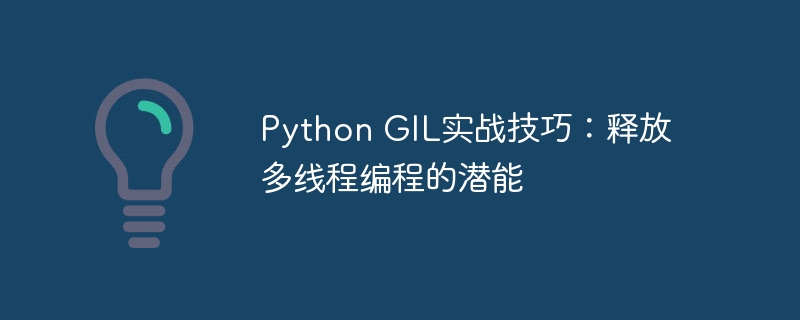

Python’s GIL (Global Interpreter Lock) is a unique mechanism that ensures atomic access to Python objects and avoids multiple threadssimultaneously A data race occurs when modifying the same object. However, the GIL also limits the parallelism of multi-threadedprogramming, because only one thread can execute Python bytecode at the same time.
The impact of GIL on multi-threaded programmingTips to unleash the potential of multi-threaded programming
Thread pool can reduce the cost of thread creation and destruction and improve program performance. The threads in the thread pool are all pre-created. When a task needs to be performed, a thread can be obtained from the thread pool to perform the task. When the task execution is completed, the thread will be returned to the thread pool, waiting to be used next time.
C language and are not subject to the GIL. Therefore, C extensions can be used to improve program performance when computationally intensive tasks need to be performed. However, C extensions also have some disadvantages, such as development being more difficult and integration with Python code more complex.
Demo code
import multiprocessing def task(n): # 执行计算密集型任务 result = 0 for i in range(n): result += i return result if __name__ == "__main__": # 创建进程池 pool = multiprocessing.Pool(4) # 创建任务列表 tasks = [10000000, 20000000, 30000000, 40000000] # 将任务提交给进程池 results = pool.map(task, tasks) # 关闭进程池 pool.close() pool.join() # 打印结果 for result in results: print(result)
multiprocessing.Pool to create a process pool, and then submit the task list to the process pool. Processes in the process pool execute tasks in parallel and return the results to the main process. In this way, you can bypass GIL restrictions and improve program performance.
The above is the detailed content of Python GIL Practical Tips: Unleashing the Potential of Multi-Threaded Programming. For more information, please follow other related articles on the PHP Chinese website!




